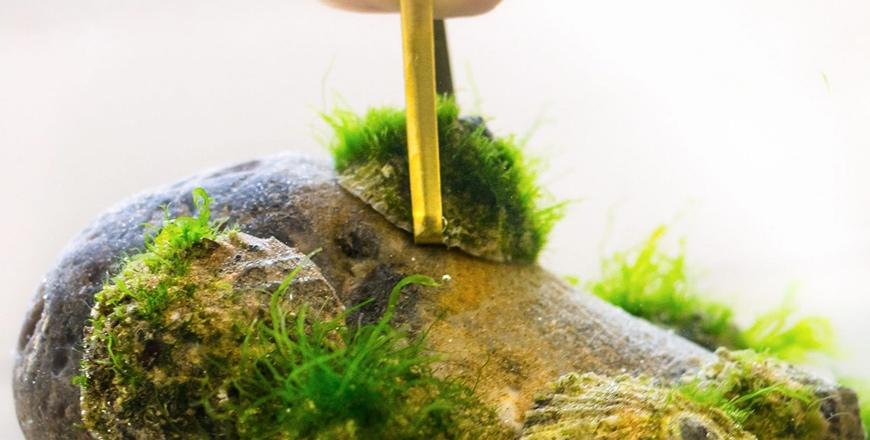You are here
Limpet sticking power down to super-glue slime, not muscle
By AFP - Jun 27,2020 - Last updated at Jun 27,2020

Pincers lift a limpet, and the rock that the shallow-water sea snail is clinging to (AFP photo)
PARIS — Limpets — those coin-sized, suction-cup critters with conical caps — have had the experts fooled all along.
For more than a century, scientists have assumed that their out-sized ability to clamp onto tide-pool rocks in defiance of bare-handed attempts to pry them off was due mostly to muscle power.
Some South African limpets, one study showed, could withstand up to 100 kilogramme of force.
“If you managed to convince a limpet like that to attach to your ceiling, it could probably hold your weight,” Victor Kang, a doctoral candidate in the Department of Zoology and the University of Cambridge, told AFP.
But that prodigious bonding power does not come primarily from suction (muscle contraction), nor clamping (muscles forcing the animal’s thin hard shell against the rock to provide added friction).
The secret, according to a study published recently in the Royal Society journal Open Science, is a super-glue slime secreted from a limpet’s pedal sole, the bottom of its rubbery body.
“It is normally difficult to adhere strongly to wet and slippery surfaces, but limpets and some other marine animals manage to do just that using special bio-adhesives,” Kang, lead author of the study, told AFP.
“The amount of muscle-driven suction is small and cannot account for their high attachment strength.”
Kang’s study it the first to exhaustively catalogue all the ingredients of the mucus secreted by nine glands found in the pedal sole of Patella vulgata, or the common limpet.
Limpets on the move
He and his team found no less than 171 protein sequences, along with a lesser number of sugar molecules.
Figuring out what these glue-like substances are made of and how they work could one day inspire synthetic adhesives — for medicine or food — that keep their sticking power in water and are biodegradable, Kang said.
Limpets have been around for some 450 million years, and chances are they will still be clinging to rocks and foraging for tiny bits of algae long after our species has moved on.
Remarkably, limpets — which can range in size from the head of a thumbtack to 10 centimetres across — can travel considerable distances when feeding underwater. When exposed at low-tide, they stay put.
Still unresolved is the mystery of how a limpet relaxing on a rock can secrete its chemical glue almost the instant a would-be predator attempts to push it from its perch.
Nor is it known how — or how quickly — that liquid lock can be dissolved once the danger has passed, or the limpet is under water.
Like all gastropods, or sea snails, its muscle-bound “foot” is in fact a complex animal with a digestive tract, teeth, eyes and organs.
In naval warfare, limpet mines are explosive devices attached to a ship with powerful magnets.
But they’re probably not as powerful as a limpet’s super-glue.
Related Articles
Spider silk may lose its claim as the strongest known natural material after researchers found that limpet teeth have more mettle.
AMMAN — The Ministry of Health on Sunday banned the import, manufacturing, possession or trade of "slime", a gel toy product popular with ch
FUJAIRAH, United Arab Emirates — A Japanese tanker attacked in the Gulf of Oman last week was damaged by a limpet mine resembling Iranian mi


















